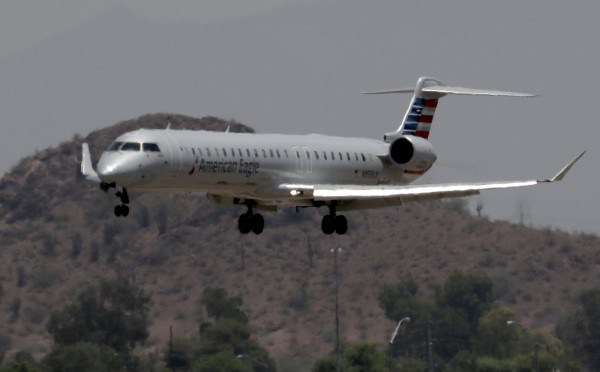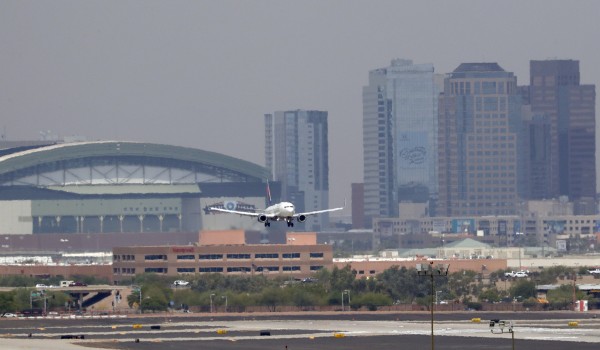Aeroplanes can't deal with the intense heat either - and here's why
Hotter air means planes have to work harder.

Humans aren’t the only ones struggling under the exceptional June heat – it seems aeroplanes have trouble getting off the ground, too.
This week, the famously intense Arizona heat saw dozens of flights cancelled in the US state’s capital, Phoenix, as temperatures reached nearly 50C.
Planes rely on mechanical aerodynamic force from movement of air under the aircraft to push them upwards.
During warmer conditions the air gets thin, meaning the plane needs to work harder to take off and land.

Lou McNally, professor of applied meteorology at Embry-Riddle Aeronautical University, told the Associated Press: “As air warms up, it expands and there’s fewer molecules to be under your wing.
“(Less lift means) you need more of everything. You need more thrust to take off. You need more distance (on the runway) to take off. You need more distance to land. You need more speed to land. It gets to a point for some aircraft that it gets just too much.”
Smaller aircraft struggle to generate the necessary thrust to drive them up.
High heat also triggers concerns about plane malfunction, as electronics within the aircraft could overheat and break down.

Although Heathrow witnessed the hottest June day since 1976 as the mercury climbed to almost 34C on Wednesday, Britain’s airports did not face such problems.
So how do hot countries manage?
Airports in the Gulf, such as Dubai International Airport, welcome flights at night and in the early morning.
Many airlines might also circumvent extremely high temperatures by taking on fewer passengers and luggage.





